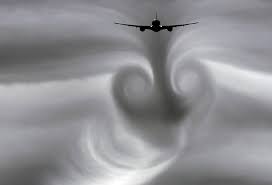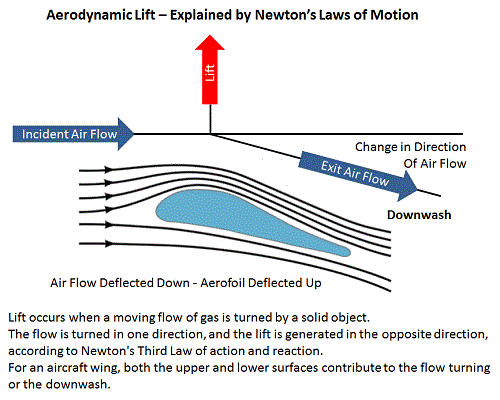Have you ever felt, on an otherwise smooth flight, an unexpected jolt of turbulence completely out of the blue? It does happen from time to time, and for some anxious flyers this unexplained event can set their mind a-racing.
A deep breath, a relax of the shoulders and a conscious effort to stop negative thoughts will help. So too will trust in your pilots. Of course, an explanation also never hurts — and that is the purpose of today’s post…
One cause of occasional and brief patches of bumpiness is “wake turbulence.”
 You are all familiar with the term “wake” in the boating sense… the waves caused by the passage of a boat or ship.
You are all familiar with the term “wake” in the boating sense… the waves caused by the passage of a boat or ship.
A boat’s wake is easy to see, and it makes perfect sense that you will feel these waves briefly as the boat passes by. The waves behind the boat slowly spread out and dissipate. A view seconds after a boat passes you will see and feel it’s waves pass you by.
In many ways airplanes and boats are similar. They both pass through a non-solid substance, and they both leave a wake. A boat’s wake is easy to see; a plane’s wake in the air is usually invisible.
I say usually because, in some very specific environmental conditions (humidity and temperature), you can see an aircraft’s wake…
Why does an airplane create a wake? Well, we might have to delve very briefly into science… stay with me, okay?
An airplane, despite what Bernoulli fanboys with their air pressure stories will tell you, flies because it pushes air downwards in order to stay up. That’s basic physics… Equal and opposite reaction. This is effected in the downwash of air behind the wing, and is not often considered in basic airplane aerodynamics discussions… but it unquestionably exists.
So, air is pushed down as an airplane flies by. Also, because of the differing pressures above and below the wing (yes, okay, Bernoulli is also right) the down wash forms a turbulent spiral.
Enough science talk… let’s take a look at some airliner wake turbulence. Here is a nice video taken of an Airbus A380, the world’s largest passenger aircraft, passing 1000 feet below the airliner that filmed it. The air conditions are such that the condensation trails from the engines help to show what the wake turbulence is doing. See if you can see the air being pushed down by the aircraft’s passage…
That turbulent downwash dissipates over a couple of minutes, and it descends at about 900 feet per minute. So, if that airliner were to pass 1000 feet above you (which is standard airliner separation) then a little over a minute later you may, depending on the wind direction, feel a few bumps. (It depends upon the wind direction because the wake turbulence blows with the wind; it may well blow out of your way entirely. Then again, it might not.)
Sometimes, if your flight is following behind and below another airliner your pilots might choose to fly to one side of course to avoid continual exposure to the other plane’s descending wake. Other times, if the airline is flying overhead the other way, they will simply fly through it. You will, when this occurs, feel a few of seconds of bumps.
Of course, this occasional wake turbulence is no big deal. Your pilots probably can’t see it (unless the other plane was making a contrail), but they are aware of other aircraft passing overhead so some wake turbulence comes as no surprise to them.
You, as a passenger, do not have this awareness of the proximity of other aircraft, so a wake turbulence jolt may come as a surprise.
Remember, your airplane does not care even a little bit about flying through high altitude wake turbulence; it is merely an issue of comfort. Perhaps, now that you know what it is, you will realise that the occasional bump in the night is no big deal.
To conclude this discussion, here is a very nice video set to music showing a bunch of aircraft contrails and wake turbulence. Remember as you watch it that even if you feel an isolated bump in a smooth flight it is most likely simply the little waves behind another ship of the air…
Tags: turb tales, turbulence, turbulence tools




At last you are here. Be bold. Sieze the moment. Be the first to take the opportunity to post a comment here.
We have beeen waiting for you to arrive here to provide your feedback. Now that you are here, go ahead and post a quick note. We would appreciate it.